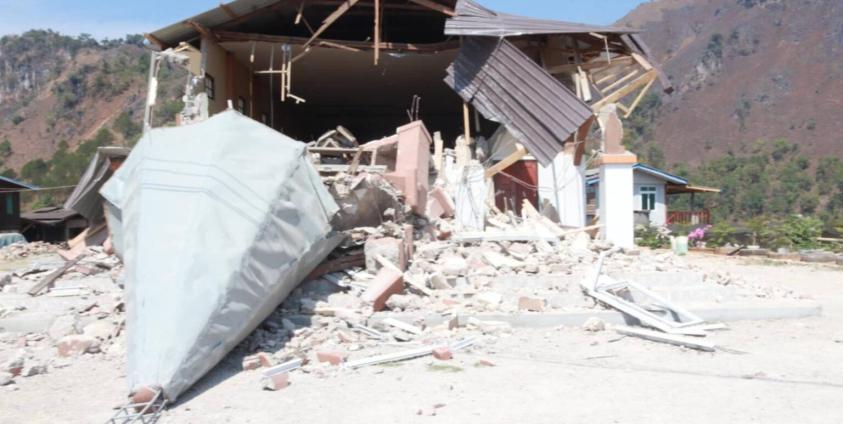Following a powerful earthquake with a magnitude of 7.7 on the Richter scale, centered in Sagaing, some areas in the mountainous regions in Karenni State suffered building collapses and damage. Locals are now trying to find ways to rebuild and recover independently, according to local sources.
In Karenni State, two Christian churches in NeeDuKhu and HohWam Upper Village in DeeMawHso Township collapsed due to the earthquake.
Currently, efforts are underway to raise donations from overseas workers to help with the reconstruction of these churches, said a female resident from NeeDuKhu village who is working in Singapore.
“For now, we will pray at the Mother Mary Grotto. If that is not possible, we will make minimal repairs before fixing the roof. But since the church is heavily damaged and quite old, it may need to be fully demolished and rebuilt. Those living abroad will need to raise funds for this,” she said.
The church in HohWam Upper Village had been newly renovated recently.
“The church had only been in use for three months before it collapsed. That’s why the villagers are devastated and do not have the strength to rebuild on their own,” said U Than Win, a retired pastor from HohWam Upper Village in DeeMawHso Township.
Additionally, a sinkhole over 100 feet wide and deep has appeared in PaSayLar village, DeeMawHso Township. As of April 2, the hole has continued to expand, according to local resources.
In MawChee, Phasaung Township, a landslide occurred, but there were no casualties.
The earthquake, centered in Sagaing, primarily affected the highland areas of Karenni State.
The Interim Executive Council (IEC) of Karenni State will provide humanitarian assistance to those affected, according to IEC General Secretary Khu Plu Reh.
“In Karenni, we are coordinating with local administrative offices and civil society organizations to assist in rebuilding some of the damaged areas,” said Khu Plu Reh.
Additionally, a church in LaEi village, and another church in WariKhu village, Pekhon Township, on the Shan-Karenni border were also damaged by the earthquake.
The Nansanphu stream in DeeMawHso Township, which many displaced people and locals rely on for both drinking water and irrigation, experienced a significant drop in water levels after the earthquake but began to rise again three days later.
The major earthquake in Sagaing struck on March 28 at 12:51 PM, followed by hundreds of aftershocks that continue to shake the region.







